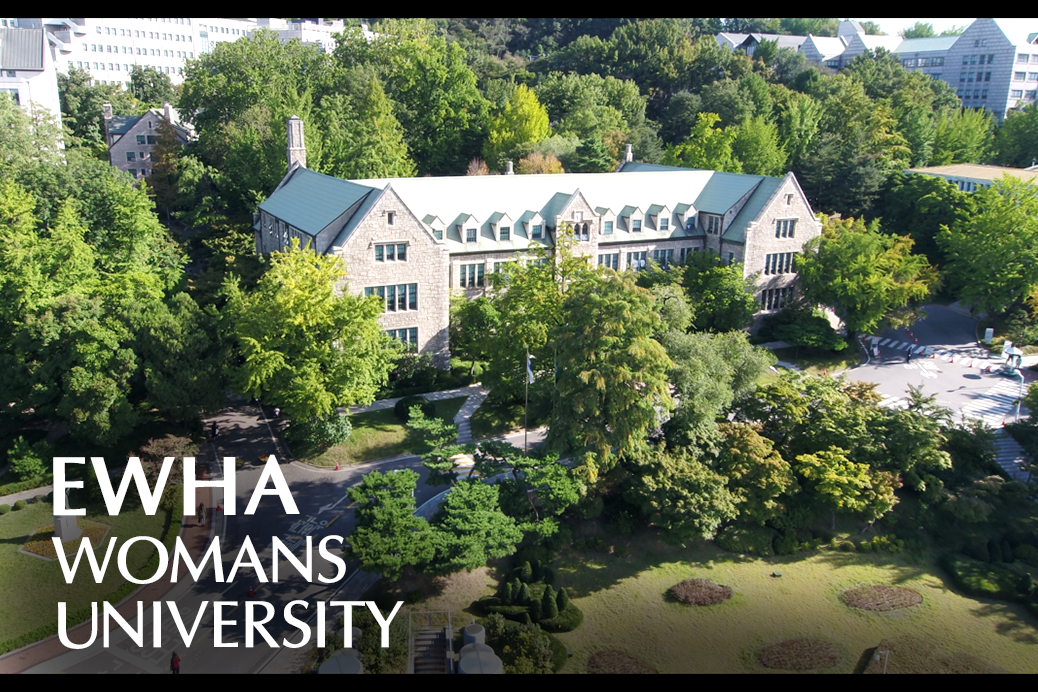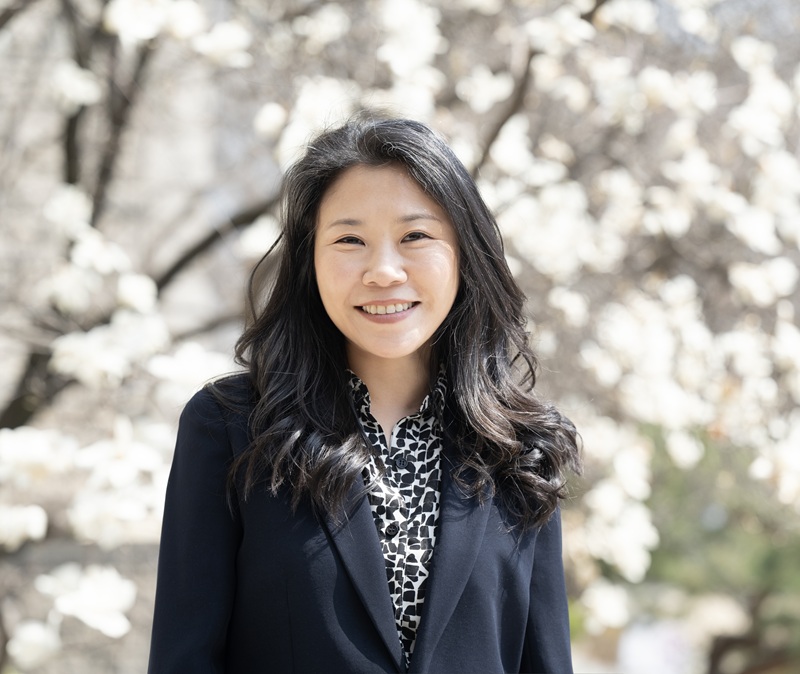News Center
EWHA NEWS
Ewha Ranks Fourth in the National Customer Satisfaction Index (NCSI) Among Private Universities
In the 2025 National Customer Satisfaction Index (NCSI) survey, Ewha Womans University ranked joint fourth among four-year private universities in Korea, advancing two ranks compared to last year. The NCSI is a highly reliable satisfaction survey conducted annually by the Korea Productivity Center. This year’s NCSI survey questioned 2,600 students from 13 private universities nationwide, assessing overall satisfaction, satisfaction compared to expectations, and satisfaction compared to the ideal. Specifically, Ewha scored 79 points in total satisfaction, up one point from last year; 83 points in customer loyalty, an increase of five points; and 82% in customer retention, well above the average. Notably, customer complaints fell from 1.0% to 0.0%, reflecting Ewha’s successful efforts to improve student satisfaction. Ewha Womans University has promoted more flexible academic systems and strengthened student support systems by introducing self-designed Module courses, improving double-major and minor programs, operating the AI-based student support system (E-Buds), and establishing major-specific career guidance frameworks. As a result, Ewha has earned the highest S-grade rating for two consecutive years in the University Innovation Support Project Performance Evaluation, most recently conducted last August by the Ministry of Education. Additionally, Ewha has ranked first among Korean universities in the Gender Equality category of the THE World University Impact Rankings for six consecutive years, consolidating its status as a premier educational institution for women. Since her inauguration, President Hyang-Sook Lee has expanded communication channels by improving student-centered administrative systems, enhancing the campus environment, and holding regular meetings with students. This NCSI result is considered proof that Ewha’s inclusive innovation and student-centered policies have led to substantial trust and satisfaction. Ewha has maintained a top position in the private university category of the NCSI survey for ten consecutive years since 2016, demonstrating the outcomes of its long-term commitment to improving educational service quality and student experience. Utilizing the NCSI survey results, the university will continue to identify improvement tasks across all fields, focusing on education quality, administrative convenience, and students’ quality of life.
President Hyang-Sook Lee Expands KoreaU.S. Higher Education Cooperation and Women’s Leadership Exchange
On October 24, during her visit to Washington D.C., Ewha President Hyang-Sook Lee met with representatives from major institutions including George Washington University (GWU), American University (AU), and the Embassy of the Republic of Korea in the U.S. to discuss measures for expanding Korea-U.S. higher education cooperation and women’s leadership exchange. This visit served as a milestone to further strengthen Ewha’s international cooperation networks by detailing collaboration in diverse fields such as AI-based research innovation, interdisciplinary convergence education, and global leadership programs. During her visit to GWU, President Lee met with President Ellen M. Granberg and Vice President for Research Robert H. (Bob) Miller to discuss cooperation measures in depth, including expanding student exchanges and short-term education programs, advancing joint AI research and co-teaching, and developing women’s entrepreneurship programs. The two universities, which have closely collaborated since signing an agreement in 2001, agreed to launch the “Micro Degree Exchange Program.” This program will enable Ewha students to pursue GWU’s AI Micro Degree and GWU students to enroll in Ewha’s Korean Culture Micro Degree. In addition, they explored new models of AI interdisciplinary convergence education, such as collaboration between Ewha’s G-LAMP AI project and the GWU Trustworthy AI Institute, as well as co-developing entrepreneurship tracks. At American University, President Lee met with President Jonathan R. Alger and Professor Gwanhoo Lee of the Kogod School of Business to discuss collaborative pathways based on both universities’ strengths in fields such as AI and climate tech. The pathways discussed included student exchanges, AI-based business management and entrepreneurship education, and the development of global leadership programs. President Lee emphasized that the convergence of AI and business management will be a core element of future higher education, expressing her strong commitment to advancing tangible joint programs. In addition, President Lee visited the Embassy of the Republic of Korea in the United States and met with Ambassador Kyung-wha Kang to exchange views on expanding academic and cultural exchange between Korean and U.S. universities, strengthening global women’s leadership, and enhancing the role of universities in public diplomacy. Ambassador Kang praised Ewha’s leadership in women’s education and pledged continued cooperation. Through this visit, Ewha Womans University has significantly expanded its global cooperation framework around AI, entrepreneurship, and women’s leadership. GWU and AU expressed their intention to broaden exchanges and make official visits to Korea in 2026 to celebrate the 140th anniversary of Ewha’s founding. President Lee stated, “As a university leading an era of great transformation through inclusive innovation, Ewha will open the future of global women’s education through international collaboration and research innovation.”
Social Network Service
EWHA SNS
-
Facebook
Instagram
Youtube
![[오늘의 이화] 1973년 11월 28일 / 데모대 선두에서 학생들을 보호하는 김옥길 총장 대강당 채플이 끝난 후 강단에 오른 총학생회는 '8천 이화 학우들에게'라는 선언문을 낭독하고 유신 반대의 뜻을 모았다. 곧이어 학생들이 교문밖으로 나가 가두시위를 시작하자 경찰과 대치하며 다수의 부상자가 속출했다. 상황이 급박히 돌아가는 가운데 김옥길 총장이 학생들을 보호하기 위해 데모대 선두에 나섰다. 김 총장은 학생들을 대강당으로 집결하도록 설득했으며, 학생들은 대강당에서 철야기도 농성을 펼치며 정권의 학원 탄압을 강력히 성토하고 조국의 민주화를 뜨겁게 부르짖었다. [Today's Ewha] November 28, 1973 / President Kim OkGil Protects Students at the Front of a Demonstration After the chapel service in the Main Auditorium, the Student Government took the stage and read a declaration titled “To 8,000 Ewha Students,” gathering collective opposition to the Yushin regime. When students soon marched out of the main gate and began a street demonstration, they faced police confrontation, resulting in many injuries. As the situation grew increasingly urgent, President Kim OkGil stepped to the front of the demonstration to protect the students. She persuaded them to gather back in the Main Auditorium, where the students held an overnight prayer sit-in, strongly condemning the regime’s oppression of campuses and fervently calling for the democratization of the nation. #1973년11월28일_오늘의이화 #김옥길총장 #유신반대 #민주화의역사 #역사DNA #이화여자대학교 #이화여대 #이대 #EWHA #UNIV 이미지](https://scontent-ssn1-1.xx.fbcdn.net/v/t39.30808-6/592320638_1270485608446535_6297115705997367133_n.jpg?stp=dst-jpg_p720x720_tt6&_nc_cat=111&ccb=1-7&_nc_sid=127cfc&_nc_ohc=gjeYZxppNbcQ7kNvwHoVH8V&_nc_oc=AdkNxz3455lIzgcG1ScQdfnLZ1evf4W2vnMeY5u7kBuRJIvVCY5kJpR4OBGyAN6-Luk&_nc_zt=23&_nc_ht=scontent-ssn1-1.xx&edm=AKIiGfEEAAAA&_nc_gid=8T4ljM1uZXUpqsN_IuCT2g&_nc_tpa=Q5bMBQFZ2YkPtQprnWDSoZesY7lKot8xyHq8LQ755CVEQHg6v-TaR0Ll5LMt8-cylefLMUsUcHvB9DXI&oh=00_AfmEUknXkEynOL4o_Y8Q_OTPLw4raY9pRe_pWvtxCwnwtg&oe=6934A8F1) 이화여자대학교 Ewha Womans University 2025-12-01
이화여자대학교 Ewha Womans University 2025-12-01[오늘의 이화] 1973년 11월 28일 / 데모대 선두에서 학생들을 보호하는 김옥길 총장 대강당 채플이 끝난 후 강단에 오른 총학생회는 '8천 이화 학우들에게'라는 선언문을 낭독하고 유신 반대의 뜻을 모았다. 곧이어 학생들이 교문밖으로 나가 가두시위를 시작하자 경찰과 대치하며 다수의 부상자가 속출했다. 상황이 급박히 돌아가는 가운데 김옥길 총장이 학생들을 보호하기 위해 데모대 선두에 나섰다. 김 총장은 학생들을 대강당으로 집결하도록 설득했으며, 학생들은 대강당에서 철야기도 농성을 펼치며 정권의 학원 탄압을 강력히 성토하고 조국의 민주화를 뜨겁게 부르짖었다. [Today's Ewha] November 28, 1973 / President Kim OkGil Protects Students at the Front of a Demonstration After the chapel service in the Main Auditorium, the Student Government took the stage and read a declaration titled “To 8,000 Ewha Students,” gathering collective opposition to the Yushin regime. When students soon marched out of the main gate and began a street demonstration, they faced police confrontation, resulting in many injuries. As the situation grew increasingly urgent, President Kim OkGil stepped to the front of the demonstration to protect the students. She persuaded them to gather back in the Main Auditorium, where the students held an overnight prayer sit-in, strongly condemning the regime’s oppression of campuses and fervently calling for the democratization of the nation. #1973년11월28일_오늘의이화 #김옥길총장 #유신반대 #민주화의역사 #역사DNA #이화여자대학교 #이화여대 #이대 #EWHA #UNIV
READ MORE ewha.w.univ 2025-12-01
ewha.w.univ 2025-12-0112월, 연말분위기 가득! 캘린더 배경화면! 🎁 배경 다운로드▷ 스토리 링크 클릭(구글드라이브) #배경화면 #12월_캘린더 #마지막 #연말 #곧크리스마스 #미리미리준비하자 #종달이 #다운로드고고 #이화여자대학교 #이화여대 #이대 #EWHA #UNIV
READ MORE Ewha Womans University 2020-01-09
Ewha Womans University 2020-01-09Ewha paves a new road with each new endeavor. As Korea’s first modern school for women, Ewha showed that domains that were once deemed impossible for women were possible. And with each new endeavor, Ewha creates a new chapter in history. Ewha’s over 130 year-old history of leading changes of the future will continue.
READ MORE
Banners
EWHA Banner



















![[오늘의 이화] 1973년 11월 28일 / 데모대 선두에서 학생들을 보호하는 김옥길 총장](/_attach/image/2025/12/ZHZGltClxcxaLmeIkrmU.jpg)



